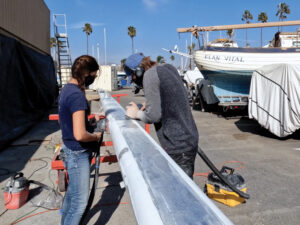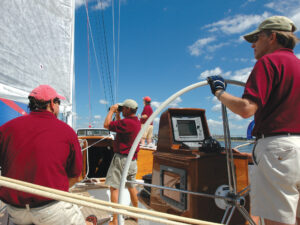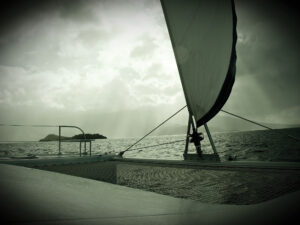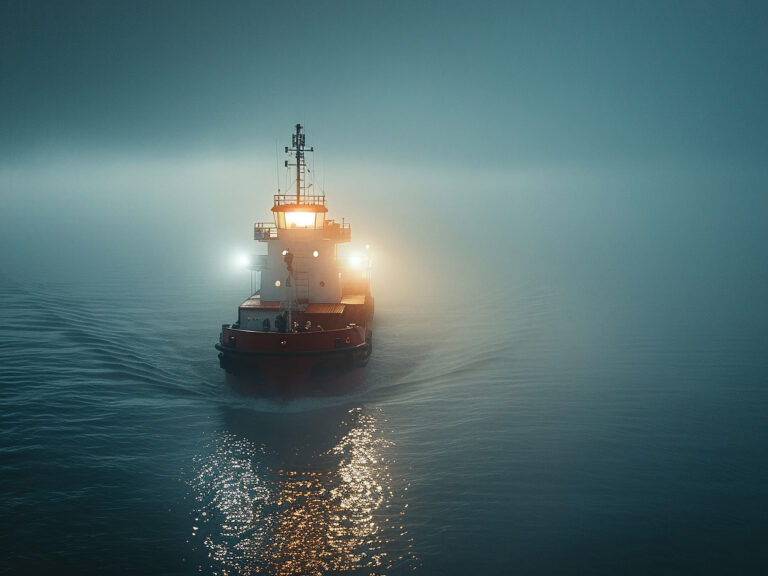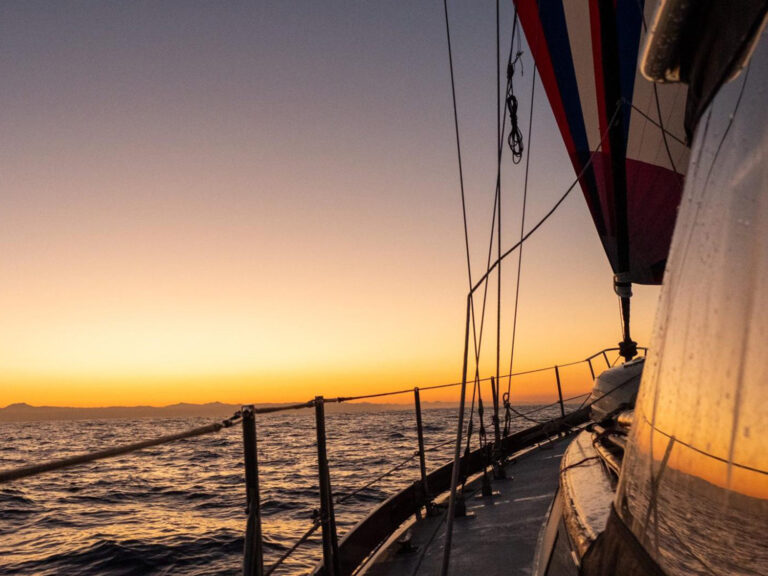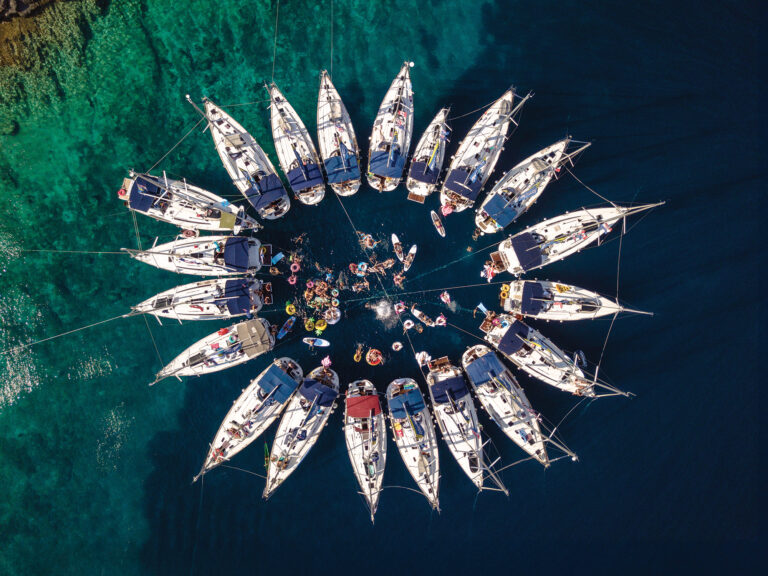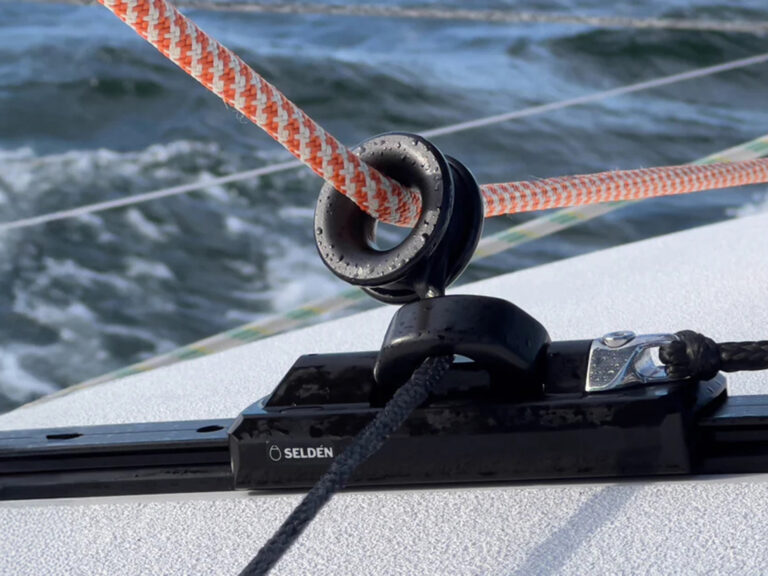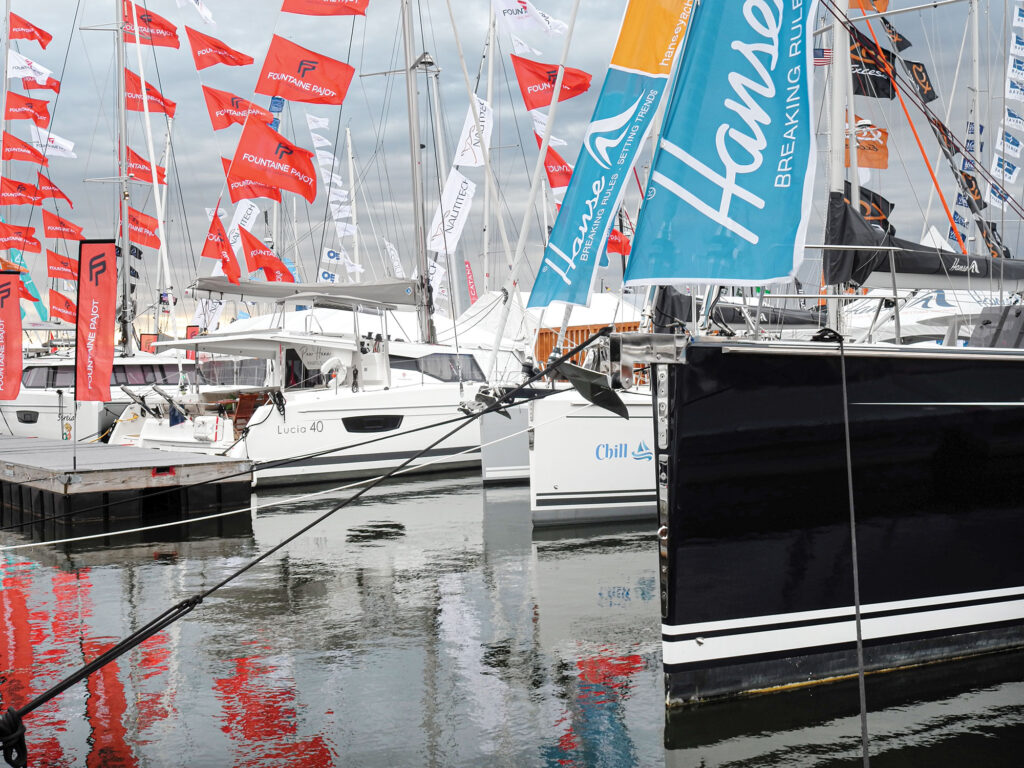
Most sailboat-show attendees have some sailing experience. Many own a boat, crew on boats, or have spent time in a sailing school or timeshare sailing program. They’ve mastered the basics and arrived at the show with a pretty good idea of what they want to buy.
In an attempt to appeal to these first-time buyers of cruising boats, there’s usually an armada of 25- to 35-foot fiberglass production sloops packed with sales brokers. Monohulls dominate this size range. Similar-length cats and trimarans tend to be lean and fast, with fairly spartan accommodations. There are some exceptions, but the heart of the multihull market trends larger.
For many shoppers, there’s a second round of boat buying that comes later. Its focus is a larger, more specialized cruising boat. By this point, sailors have decided whether they savor the time spent under sail, or the time in anchorages and ports, or the onboard entertaining, or a little bit of everything. But because cruising boats span from detuned race boats to motorsailers, shoppers have to wade through the gamut of genres.
And all of these shoppers are thinking about price. They know how much they have to spend, and they subtract 20 percent for customization or refit work. Mooring or slip-rental fees, insurance, and winter-storage charges also factor into the thinking.
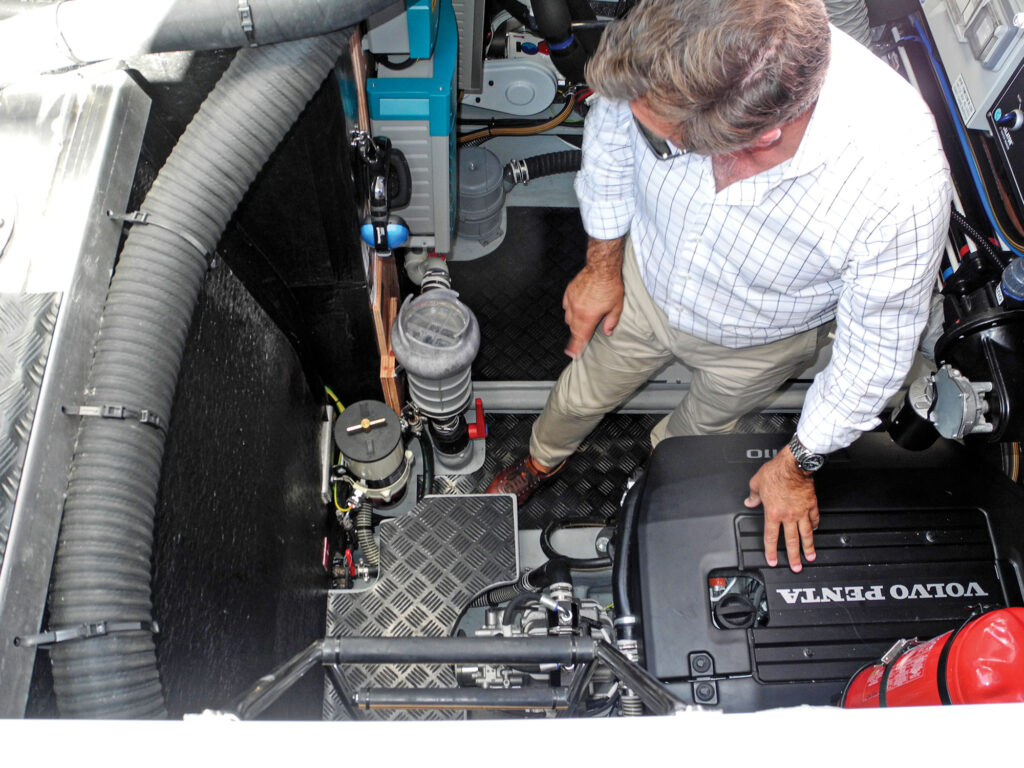
Repeat buyers often recall how easy it was to pick their first 30-footer, while selecting the right 40-footer was much more of a challenge. Most agree that it helps to know whether your cruising plans entail a prolonged coastal meander, transoceanic passage or some of each. The difference significantly influences the required design and fit-out.
A coastal cruiser will benefit from shoal draft, bumped-up auxiliary propulsion, and an interior layout with comforts and conveniences. An ocean cruiser prioritizes vessel operation at sea, in everything from sailhandling to meal preparation to comfortable berths.
Strength, stability and seakindliness matter to ocean cruisers, who take into account ISO category rankings and offshore Category A standards. Most monohull buyers in this group also prefer a stability index of 120 degrees or more, want to know how the keel is secured to the hull junction, and want to know how the rudder was made. Multihull sailors recognize the importance of form stability, which is heavily influenced by the buoyancy of the amas and the lateral separation between the center of buoyancy and the center of gravity. They also pay heed to windage, and they value ways to reef in a hurry.
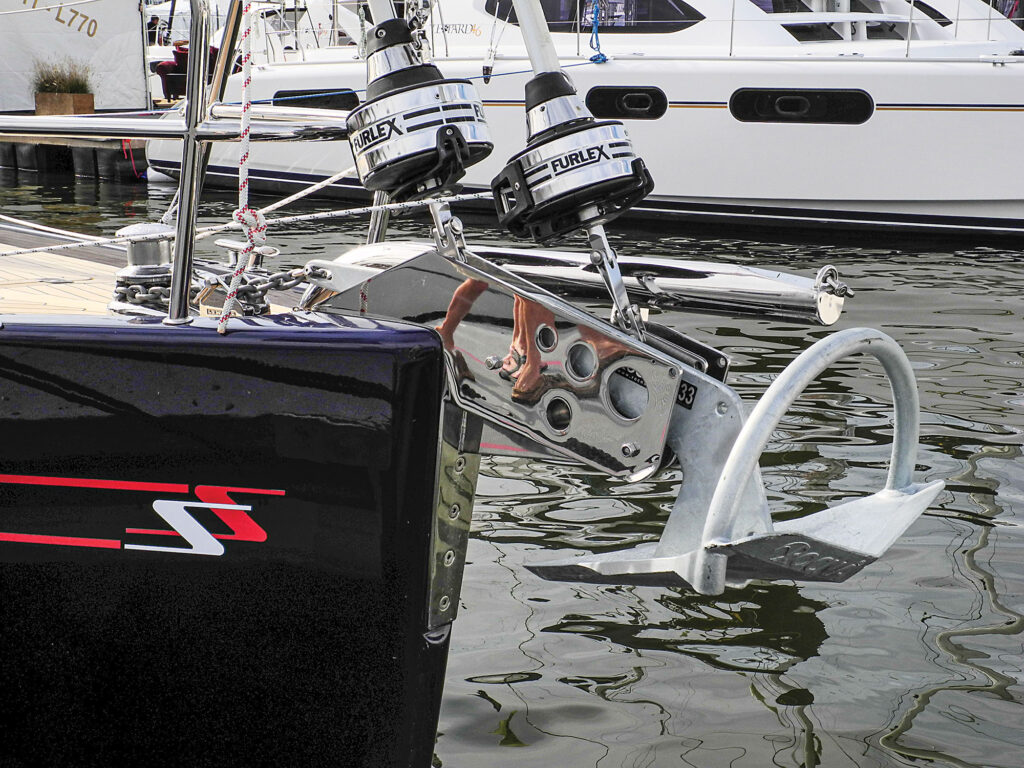
Huge strides have been made in furling and reefing gear, reliable autopilots, bow thrusters, power winches, and ground tackle. But a crucial variable hasn’t changed: the importance of the crew’s capabilities. Cruising sailboats are larger, and tales abound of just two sailors handling a 60-footer. It’s a glorious experience on a smooth-water afternoon, but when a trade-wind squall or a cold front takes hold in the middle of the night, the towering mainsail erases all signs of tranquility. While shopping, be sure that the sail area you prefer is in keeping with the size, agility and capability of your crew.
Also, plan your show time. Start looking before you get there. Scrutinize online information about the sailboats you intend to visit. Jot down questions to ask at the show—about the build process, systems, and performance under sail. Each boat’s specs tell a story, including how much sail area it takes to push the boat through the water.
Sloop and cutter rigs dominate the waterfront. This is partially because of innovative furling headsails, mainsails and power winches that facilitate shorthanded sailhandling. The net result has been rigs well over 65 feet in height with mainsail area of more than 600 square feet. Many of the larger cruising boats (with rigs over 65 feet) exceed Intracoastal Waterway bridge clearance and have to transit offshore, even if their draft is under 6 feet.
During every deck check and rigging scrutiny, boat-show shoppers should note where the mainsheet is attached, as well as the path the sheet tackle takes as it arcs across the cockpit during a tack or jibe. This is also a good time to note line leads and winch placement. Safety factors, such as areas to avoid during tacks or jibes, are obstacles that should be minimized on a cruising boat. Deck width and slope are important too, especially where inboard shrouds cause a crew to step outboard to clear the standing rigging.
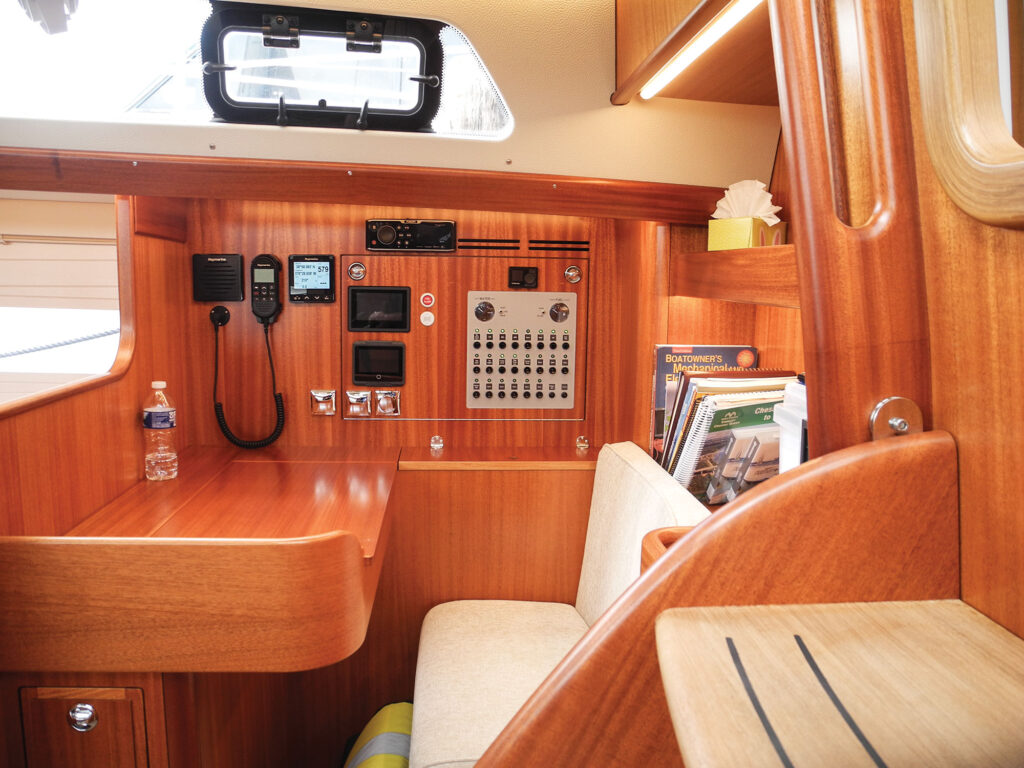
Check to see if the bow roller will keep the anchor from hitting the gelcoat; if the nonslip decking leads to slick, shiny gelcoat and slippery hatch covers; if the cleats, chocks and line leads are in optimal locations; if the crew can reach cockpit handholds and prevent a fall to leeward if the transom/swim platform is easy to open and close (imagine being in a light chop); if the berths are designed to function efficiently underway, with adequate ventilation; if the galley is built for underway and at-anchor use; if there is good engine access to key machinery; and if the wiring and plumbing runs are labeled and accessible.
If you feel that you have seen the right boat, take another close look before closing the deal. Make sure you spend time at the helm, evaluating the ergonomics. If the dodger and/or Bimini top were not up the first time around, factor in their influence. Note how you will launch and stow the dinghy, and how a hoist for the outboard motor could be added.
Many brokers and sailboats remain available for a few days after a boat show, often providing demo sails. This can be a worthwhile experience, but be sure that you and your crew can match the sailing talents of the broker and the three lads from the local sail loft.
A broker friend once told me that he was amazed by how many boat-show attendees rushed below to admire a sailboat’s interior but never looked aloft to see if the boat had a rig. For those seriously considering voyaging under sail, accommodations are important, but so is everything else.

